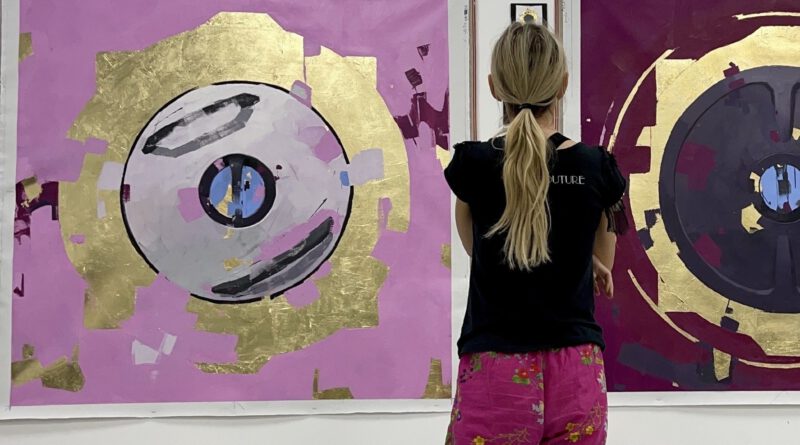SpaceX gives unprecedented access to this tech artist
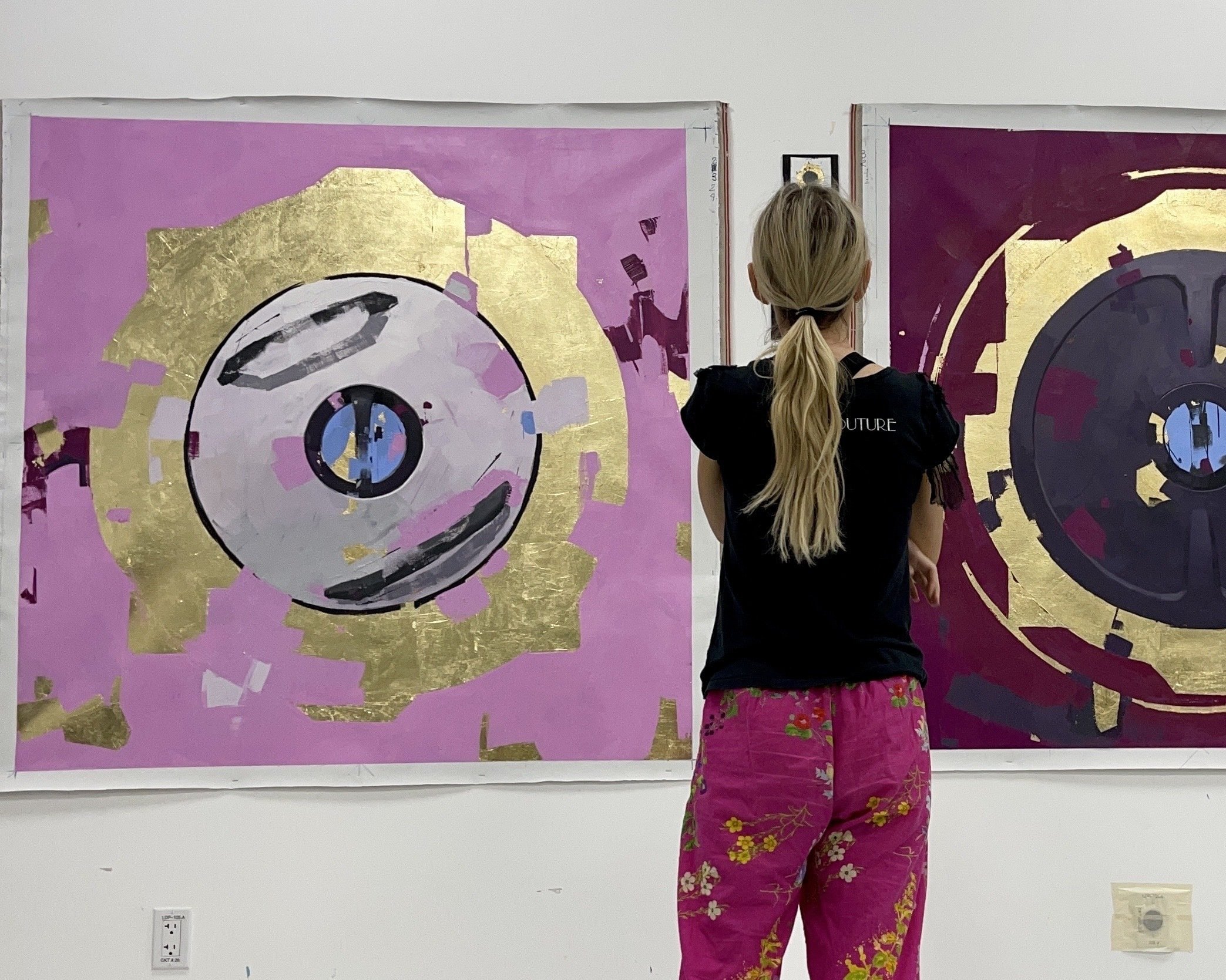
Before SpaceX gave Agnieszka Pilat the keys to her own art studio at its headquarters, she had to sign away her life in non-disclosure agreements, the artist half-jokes.
Pilat, 49, is a self-described “techno-optimist,” a fan of the space exploration company’s mission to one day send humans to Mars on a fleet of Starships to establish a self-sustaining city. That commitment, a personal dream of the company’s founder, Elon Musk, might just be what’s necessary to save humanity, she told Mashable.
Though she’s grateful for the unprecedented access she’s been granted — an intimate view of engineers as they build rockets and spacecraft — she doesn’t feel beholden to the billionaire behind it all, whose celebrity status amuses her. She likens Musk to JFK for the way he’s invigorated a new space era. But Pilat is adamant that she never asked SpaceX’s CEO, or any tech firm leader who has allowed her behind the scenes, for money.
“I work for the machines — I don’t work for a specific person,” she said. “The work is so important that I don’t want to fall trap to trying to make something to please a person.”
As Pilat seeks to capture SpaceX technology through art, the company is about to face a monumental trial on its way to achieving that Red Planet settlement, decades into the future. After an unsuccessful attempt six months ago to fly an uncrewed Starship into space, the company planned to try again Saturday morning, Nov. 18. Starship is a hulking 400-foot-tall rocket and spacecraft, built with twice as much thrust capability as NASA‘s mega moon rocket, the Space Launch System.
During SpaceX’s first attempt from its private South Texas spaceport on April 20, the rocket didn’t separate from its colossal booster and tumbled out of control, exploding four minutes after liftoff over the Gulf of Mexico. The engine blast flung debris from the launch pad into protected wetlands and along the nearby beach, prompting a lawsuit from environmentalists and an FAA investigation.
But even amid failure, the impressive feat of a stainless-steel behemoth rising off the ground was a crowd-pleaser, including the unintended fireworks of an obliterated Starship. Washington Post space reporter Christian Davenport described the event as “the combustible violence of rocketry as performance art.”
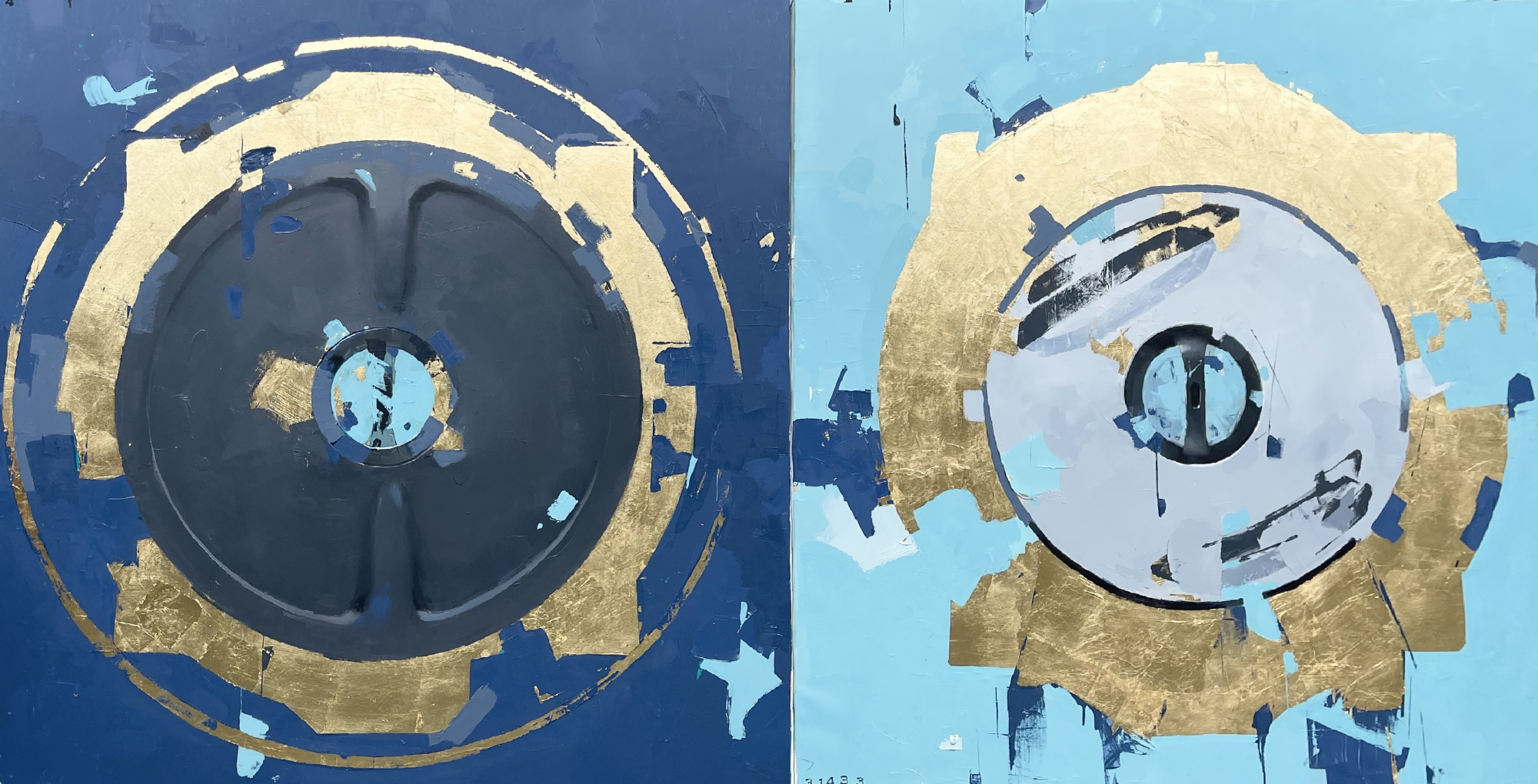
Performance art is well within Pilat’s wheelhouse. Before her informal residency began at SpaceX’s headquarters, she struck a relationship with Boston Dynamics, a tech company now famous for its robotic dogs dubbed Spot by the manufacturer. Initially, she sought to paint a portrait of the quirky, four-legged machine. That project evolved into Pilat using the robots to paint, their feet trotting blotches onto canvas.
Pilat worked with engineers to program the dogs according to her instructions. She and three of the robotic dogs will have a demonstration at the National Gallery of Victoria’s Triennial art exhibition in Melbourne, Australia, beginning Dec. 3. Throughout the event, visitors will be able to watch the dogs create a painting autonomously.
The dogs, she admits, are now linked to her brand: She’s a painter immortalizing tech to live beyond its obsolescence and paying tribute to the fruits of Silicon Valley. One of the robots, who she calls Basia, is her pet — the kind perfectly suited for a human who splits her time between San Francisco and New York. Basia, of course, doesn’t need a dog walker if Pilat is away for a week or two, although the pair does enjoy taking strolls around the streets of Manhattan for the fun of it.
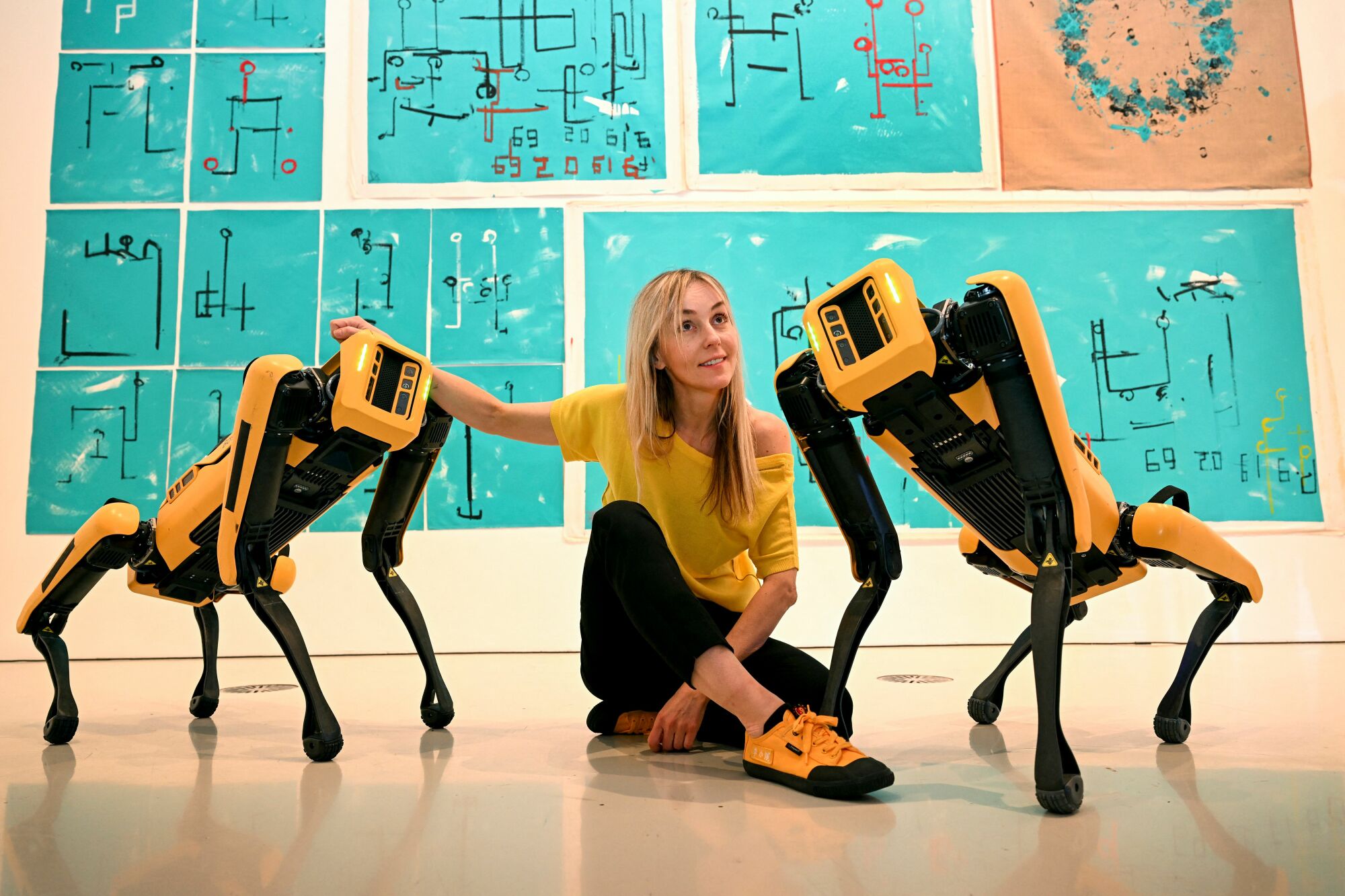
“Basia is very sweet, unlike the work from SpaceX, which is very serious, very exciting, ecstatic — I would almost say there’s elements of prophecy in it,” Pilat said. “Basia is very silly, so this is a totally opposite approach.”
Want more science and tech news delivered straight to your inbox? Sign up for Mashable’s Light Speed newsletter today.
“I work for the machines.”
At SpaceX, Pilat has been working on a series called “Infinite.” After carefully looking over the many pieces of equipment at the SpaceX campus in Hawthorne, California, she settled on something that immediately spoke to her: The hatch for the Crew Dragon capsule, the spaceship NASA largely relies on to send astronauts to the International Space Station.
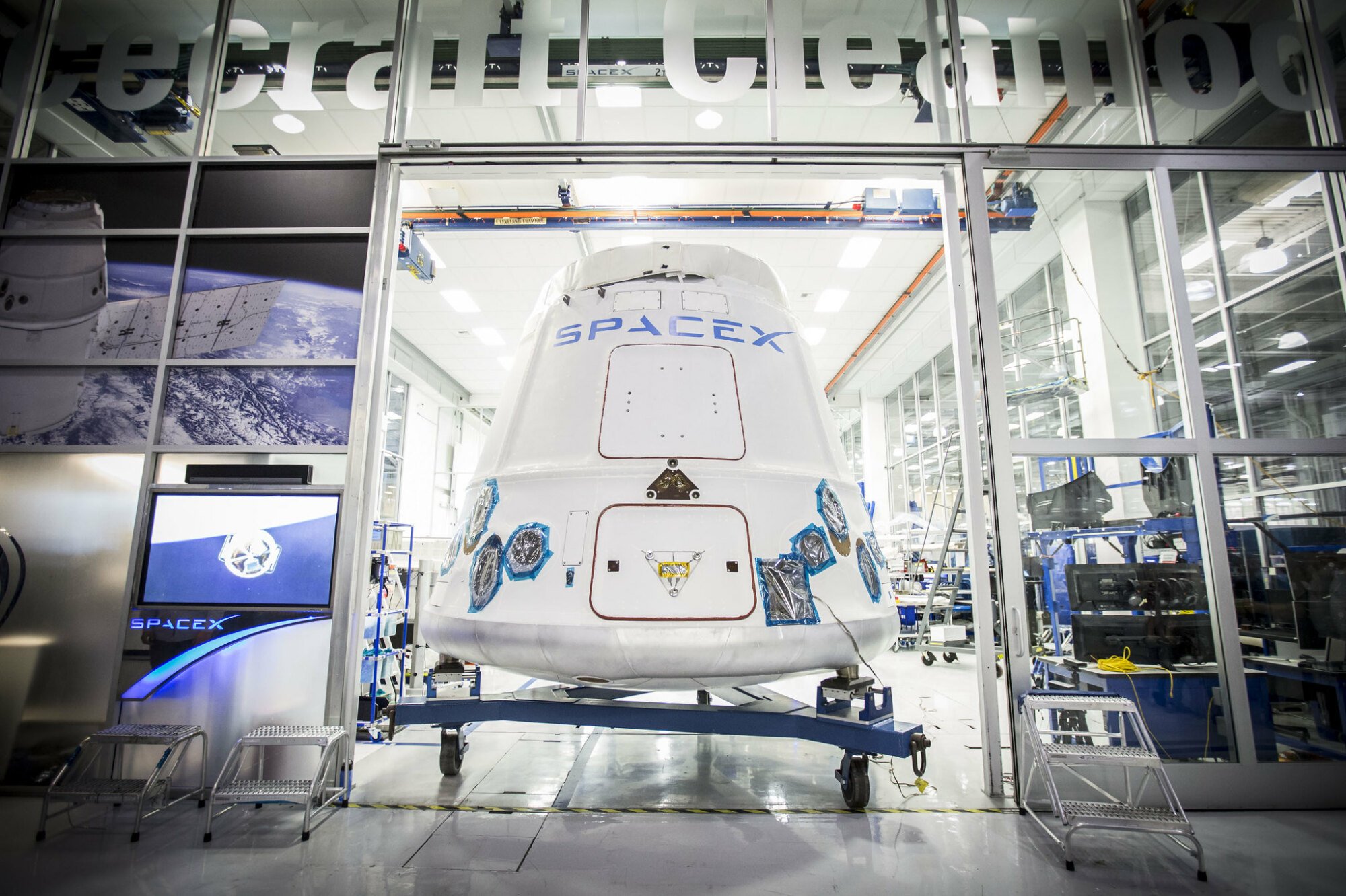
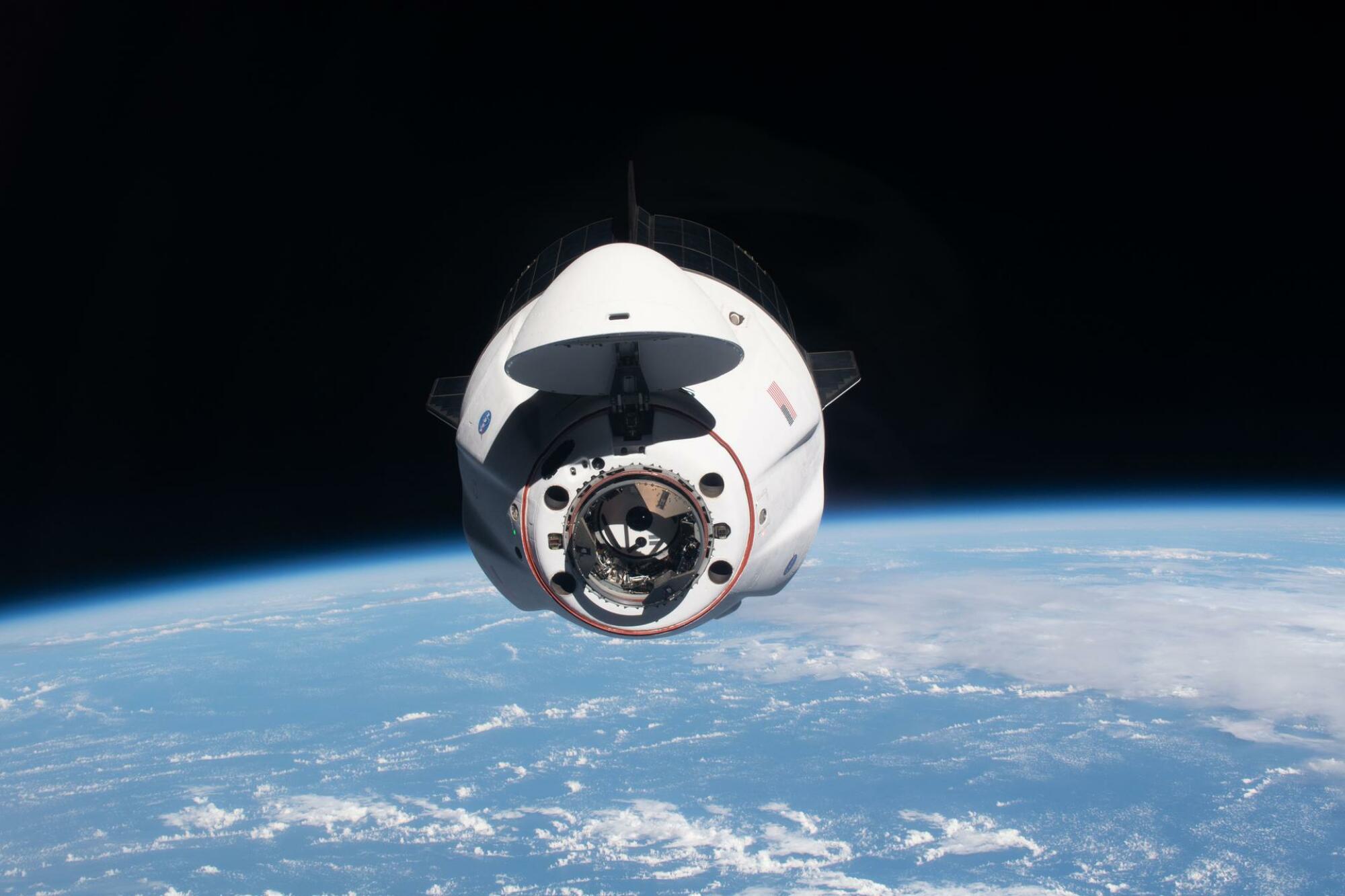
“I liked that idea that it’s kind of a door opening to infinity or to the infinite, which is space and time,” she said.
Though she’s not a household name, Pilat is becoming well-known among tech investors. A New York magazine story last year referred to her as Silicon Valley elite’s favorite artist — a wild departure from her impoverished childhood in communist Poland. The article quoted Jaron Lanier, one of the pioneers of virtual reality, who said she’s able to speak their language.
“I don’t think what she actually says is uniformly positive,” he said, “but people hear what they want to hear.”
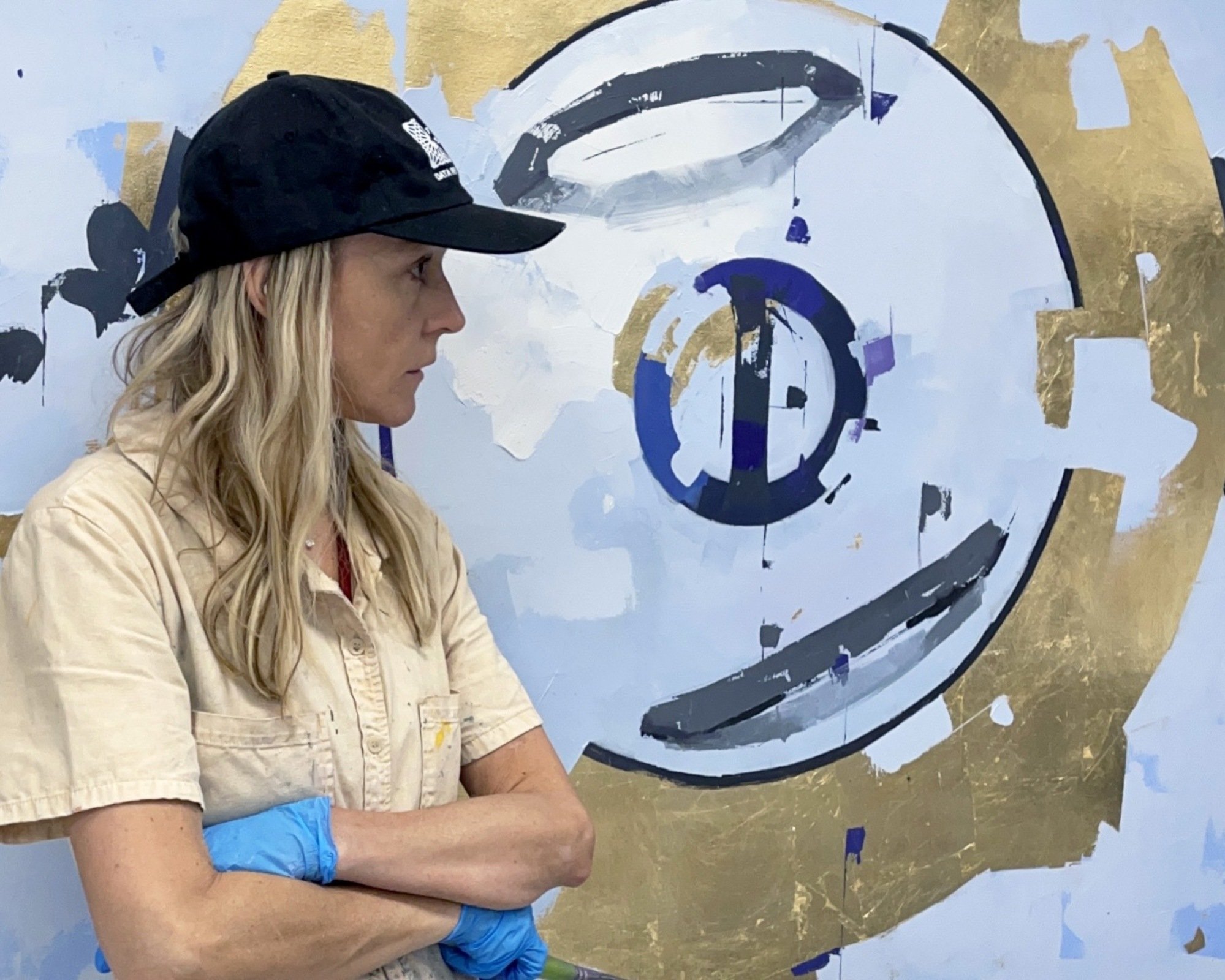
For a week at a time, every couple of months, she visits her SpaceX studio, where the company rolls in a hefty spare capsule they normally use for training exercises. Then she uses oil paints on large panels of Belgian linen to create images of the circular door, either close to its actual size or larger to give it more grandeur. Her workspace is a jumble of splattered palettes and brushes, with a squadron of empty SpaceX coffee cups amassing along the tables’ borders. Some of her work is pre-sold, but she stores paintings at SpaceX for the employees to enjoy.
“When you think about technology and religion, there are so many parallels.”
Each of the hatches she paints is surrounded by gold leaf, meant to evoke the halos in Christian iconography by the old masters. Long before Pilat trained Basia to sit, she was studying classical portraiture. She likes to use these techniques when painting technology to draw connections between the machines of today and historical aristocracy, wealth, and religion.
She sees how technology is sometimes extolled as a modern-day messiah.
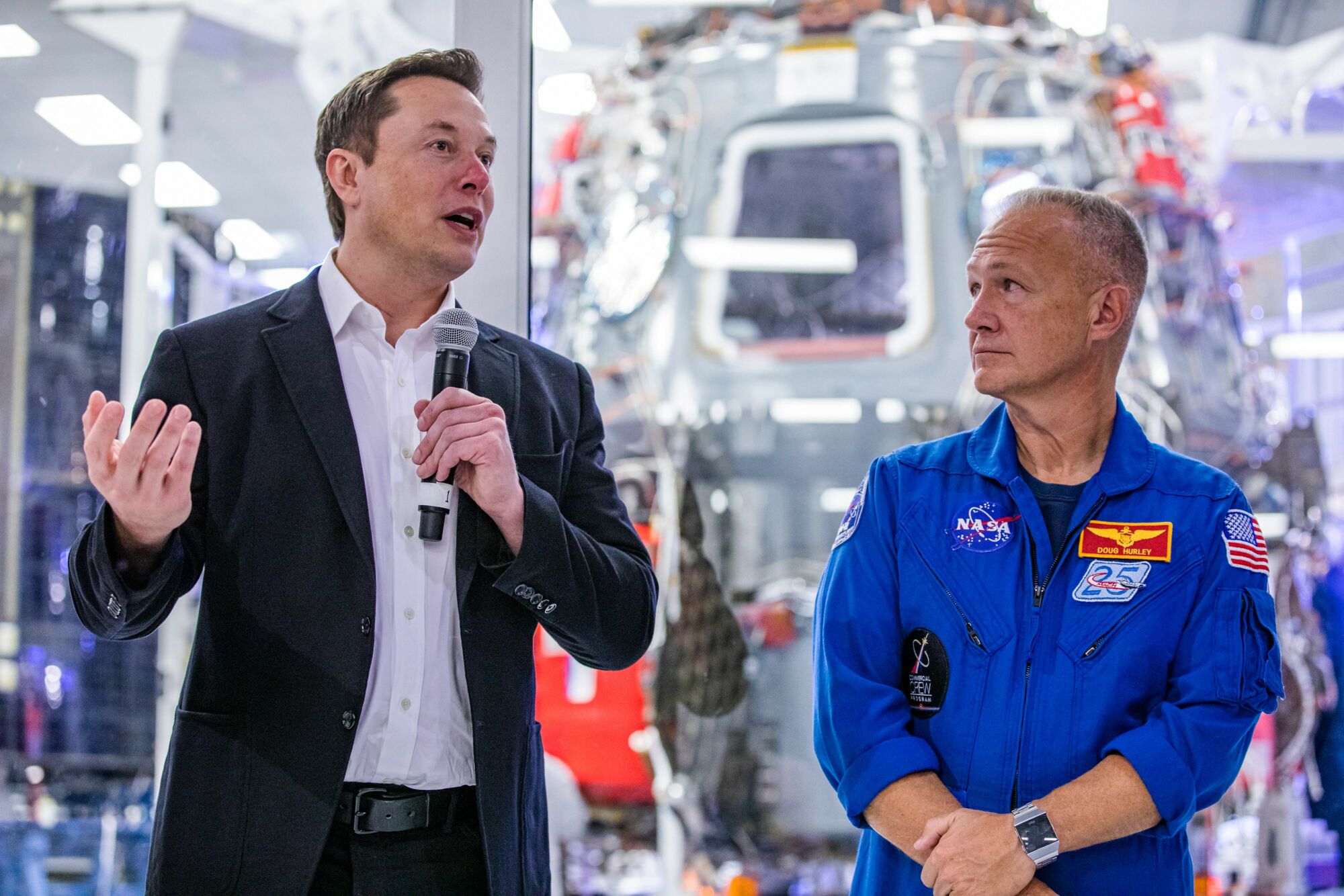
“When you think about technology and religion, there are so many parallels. One of them, of course, is that utopian idea of a better future,” she said.
The similarities extend to the fandom that surrounds the uber-rich CEOs who lead these companies as well, she adds. Musk, as an example, has quite a reverential following, especially on X, the social platform formerly known as Twitter, which he acquired last year.
“You might use the word ‘worship,'” she said.
